ON this day in – February 16, 1959: Dr Fidel Castro, 32, was sworn in as Prime Minister of Cuba. The seven-year military rule of President Fulgeneio Batista had ended when the corrupt autocrat fled on January 1, 1959. In 1975, he died in exile in Spain.
In 1959, Cuba became the West’s first Communist State. Castro, at the head of his 26 July army would bring in a brave new dawn.
In 1976, Dr Castro passed a new constitution and became president, secretary general of the Communist Party and commander-in-chief of the army. In 2008, Raúl Castro, Fidel Castro’s younger brother, was named Cuba’s first new President in nearly 50 years. Adios Castro. Hola, Castro.
In this Anorak photo story, we look at what went before that momentous day when revolution was won:
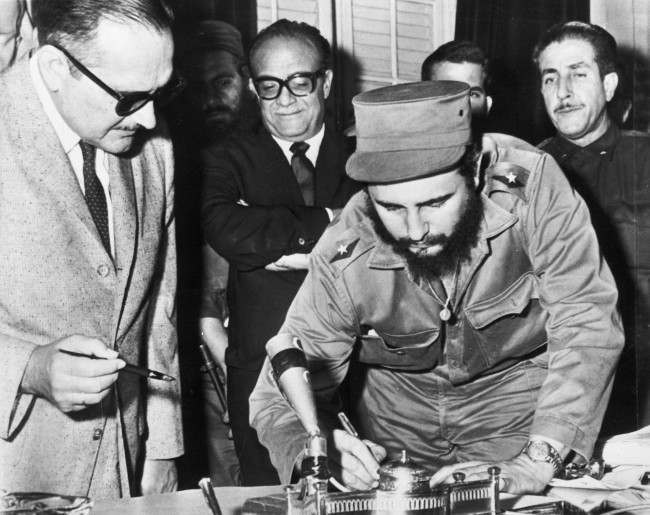
And before that? This is the story of Castro’s rise up to the day he took power:
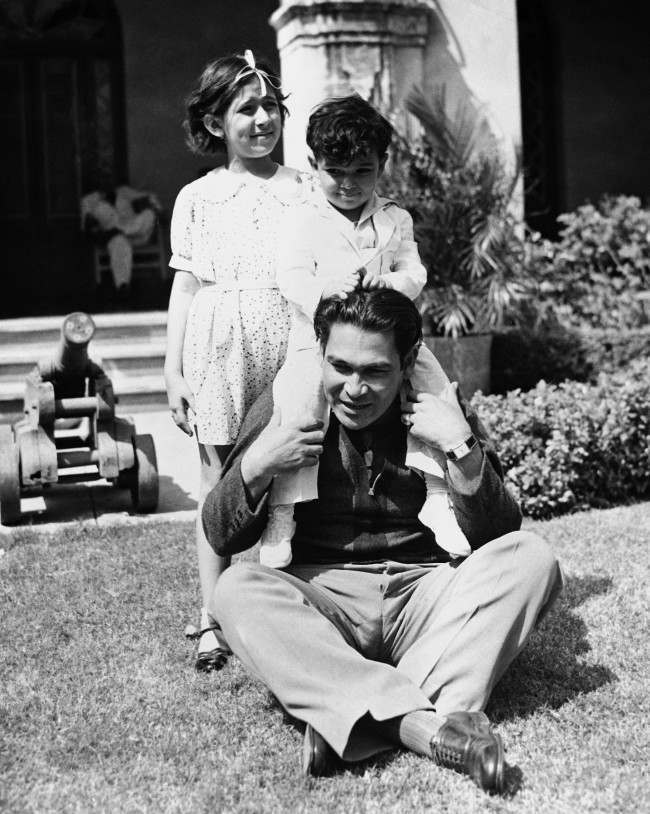
Colonel Fulgencio Batista, Cuba’s strong man, playing with his children at his Havana home, on March 14, 1937.

Fulgencio Batista, who was President of Cuba from 1940-1944, is seen while visiting the United States, in San Francisco, Calif., on March 17, 1945.
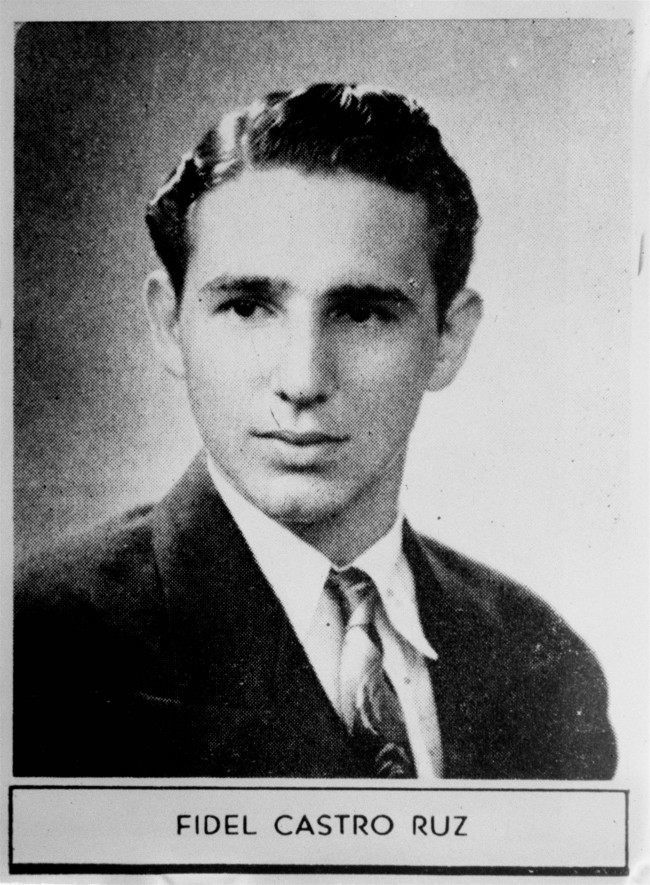
Fidel Castro in his 1945 year book
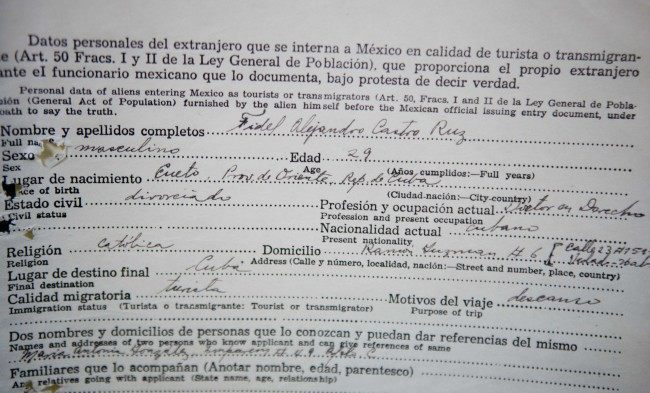
A 1955 Mexican migration document of Cuba’s revolutionary leader Fidel Castro is on display as part of the National Institute of Migration exhibit marking the organization’s 20th anniversary, in Mexico City, Tuesday, Nov. 5, 2013. Castro, according to historians, used his time in Mexico to organize the group of rebels who took a boat to Cuba in 1956 to launch the rebellion against dictator Fulgencio Batista. The exhibit of 16 notables that include Castro, Russian Marxist revolutionary Leon Trotsky and Nicaraguan guerrilla leader Augusto Cesar Sandino, is a sample of the nearly 500,000 records that make up the institute’s archive.
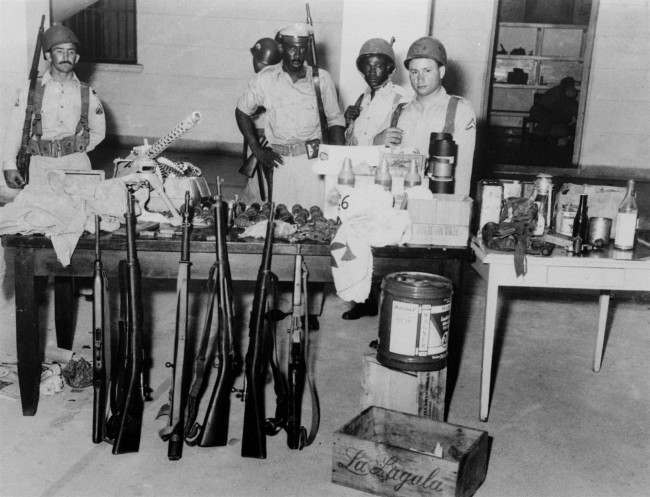
EDITORS NOTE : GRAPHIC CONTENT – Following an unsuccessful uprising against dictator Fulgencio Batista the dead bodies of shot insurgents lie on the grounds of the Moncada barracks in Santiago de Cuba on July 26, 1953. The attack on the Moncada barracks, which left 54 people dead, was the start of a long lasting civil war on the island of Cuba, which ended with the overthrow of the Batista regime
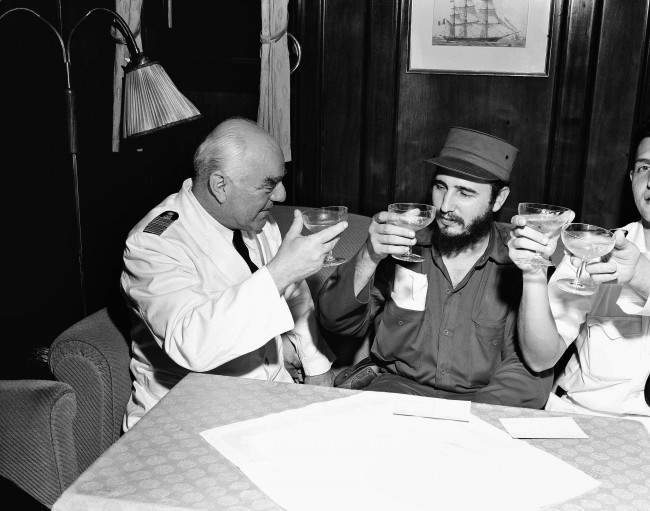
Captain Heinrich Lorenz, left, of cruise ship MS Berlin, proposes a toast to the success of Fidel Castro’s government in Cuba, April 15, 1954, Havana, Cuba. Castro visited the North German Lloyd ship after it landed in Havana from New York.
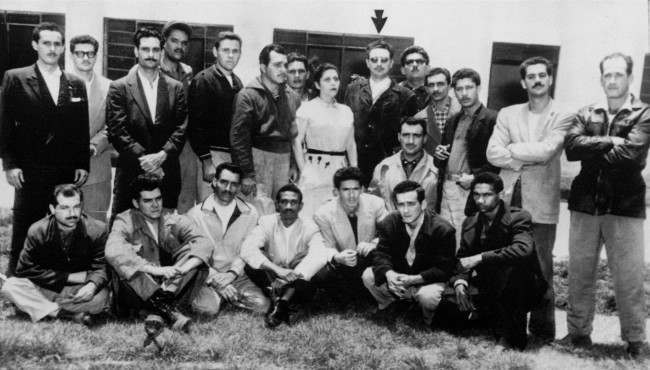
Twenty-two Cuban exiles arrested for plotting the assassination of President Fulgencio Batista are shown in front of a government office in Mexico City. June 26th, 1956. Fidel Castro, prominent revolutionary, is standing and indicated (arrow), and seated second from left is Ernesto “Che” Guevara.
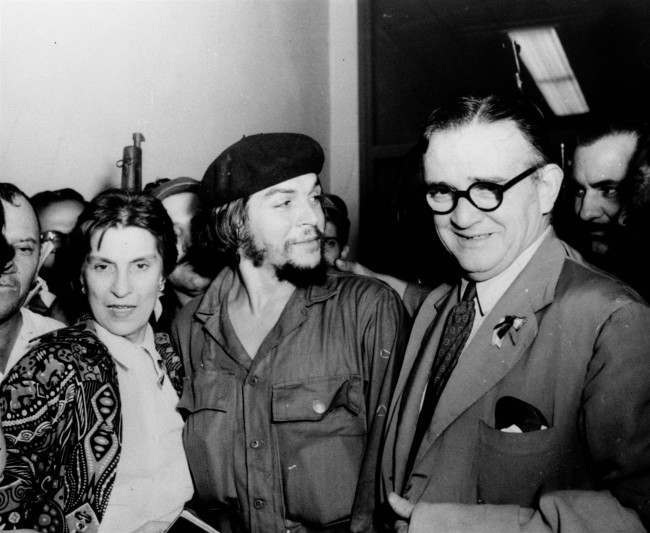
Ernesto “Che” Guevara is flanked by his parents on their arrival at airport in Havana, Cuba in 1959. Guevara was reported to have been killed by Bolivian troops October 8, 1967.
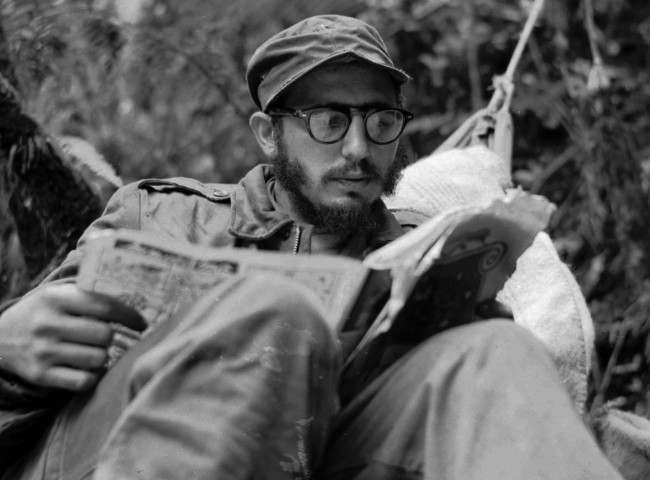
Cuban guerrilla leader Fidel Castro does some reading while at his rebel base in Cuba’s Sierra Maestra mountains in this 1957 photo.
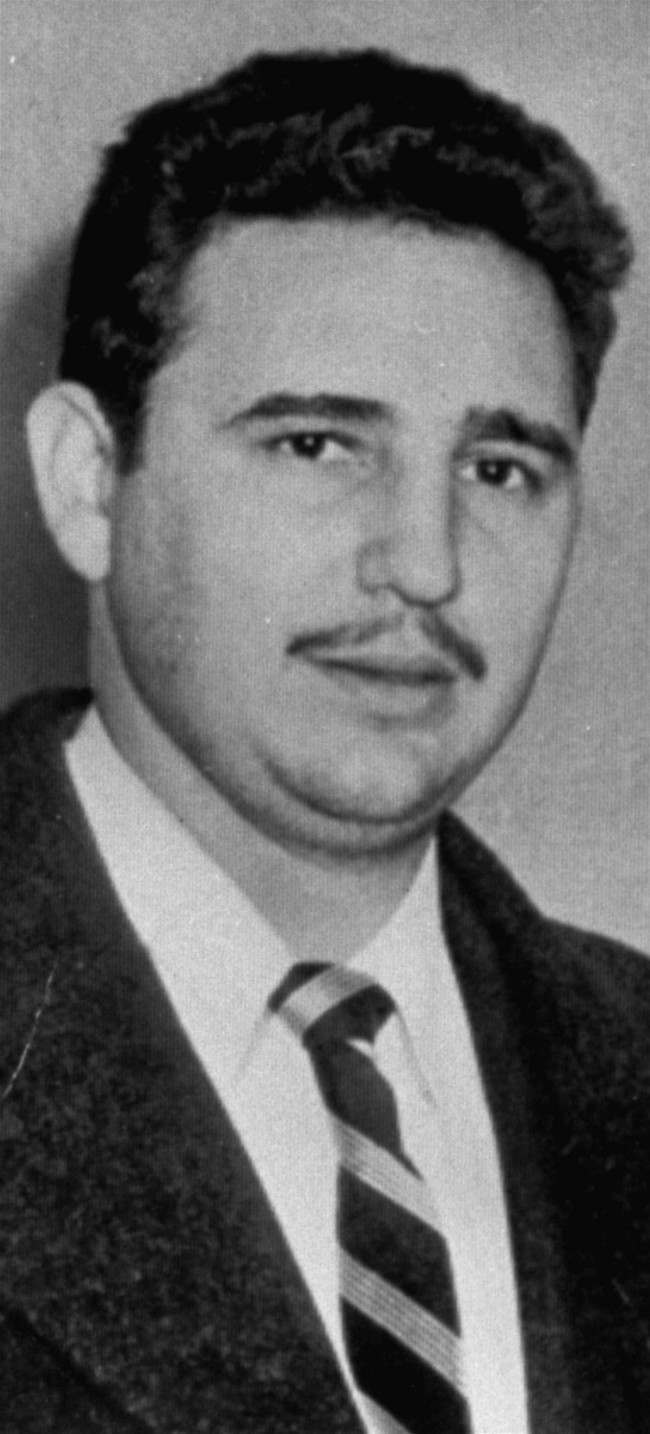
Cuban rebel leader Fidel Castro is seen in this April 3, 1958 photo.
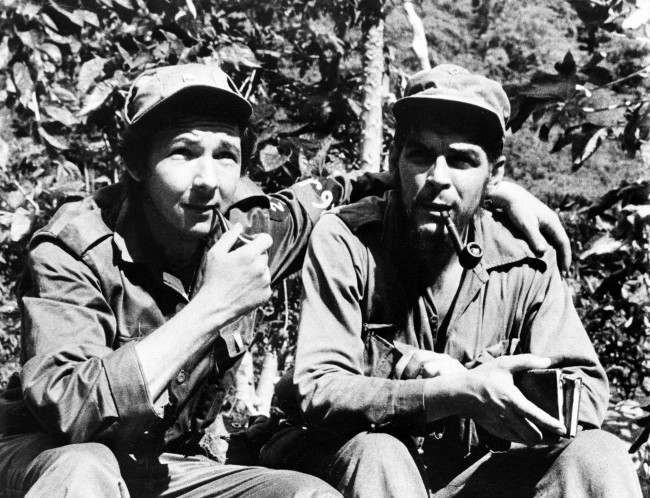
Raul Castro, left, younger brother of Cuban rebel leader Fidel, has his arm around second-in-command, Ernesto “Che” Guevara, Argentine national, in their Sierra de Cristal Mountain stronghold south of Havana, Cuba, during the Cuban revolution in this file photo.
June, 1958.
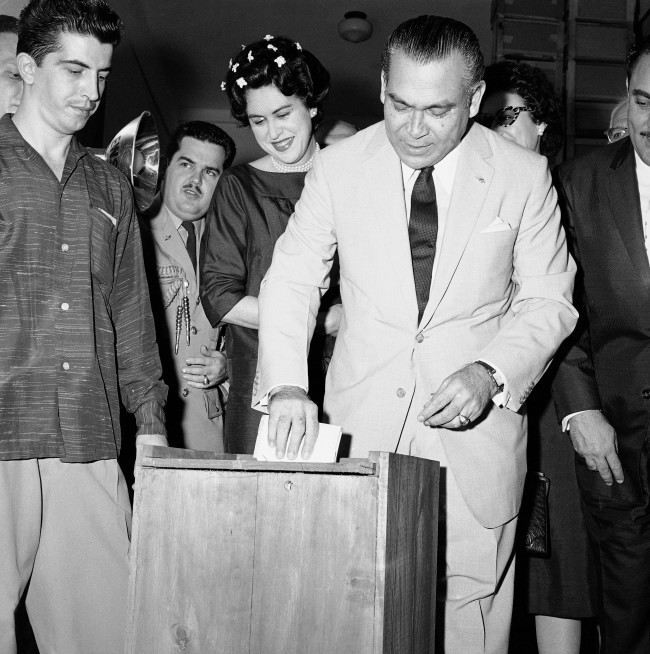
Placing his marked ballot in the ballot box is Cuba’s President Fulgencio Batista as his wife, Marta, watches at left in Havana, Cuba, on Nov. 3, 1958. Polling places were guarded heavily. Havana was tense in face of threat of violence by Fidel Castro’s rebels. Voting was light during day but a rush to vote is expected just before polls close.
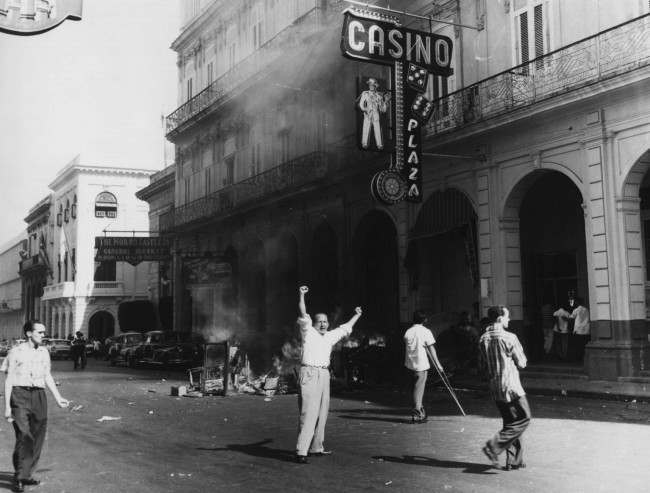
People burn tables and roulette wheels outside the Plaza Hotel casino in Old Havana, Cuba in Jan. 1959
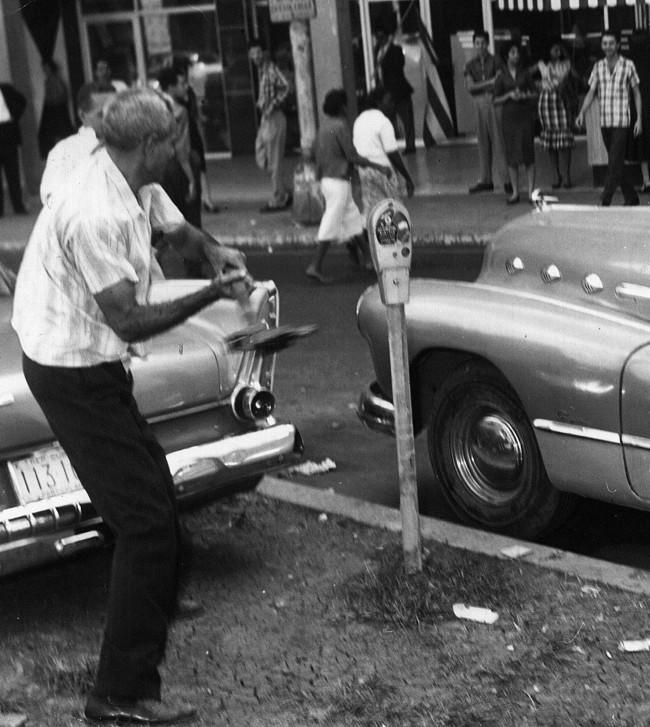
In this January 1959 picture, residents tear down a bus sign on the corner of Consulado and Neptuno Streets in Old Havana after revolutionaries gained the city. On Jan. 1, 1959, Dictator Fulgencio Batista fled Cuba and Fidel Castro took power.

his January 1959 file photo shows the younger brother of Cuba’s revolutionary leader Fidel Castro, Raul Castro, as a young guerilla soldier in an undisclosed location in Cuba. Raul Castro, now the current leader of the Communist-run island
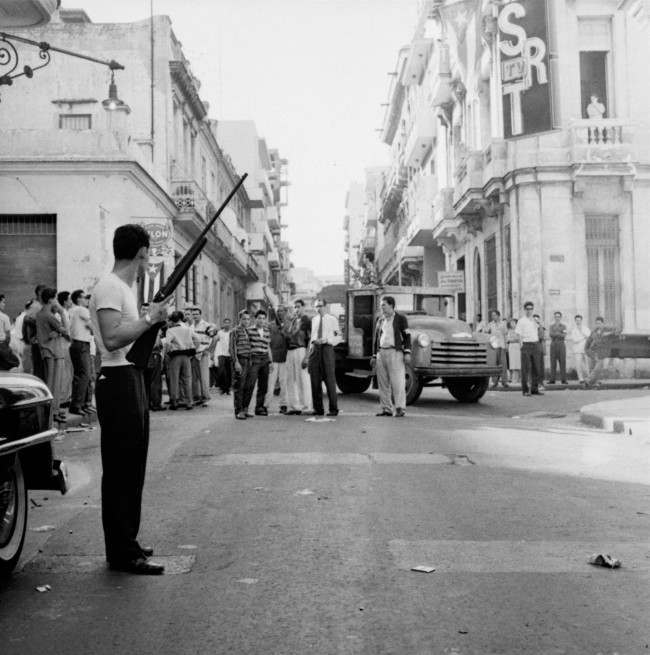
This is a familiar scene throughout Havana today with rebel forces manning road blocks and challenging all persons on the street. Troops of Rebel Leader Fidel Castro moved into downtown Havana, January 2, 1959. Civilians man most of the road blocks.
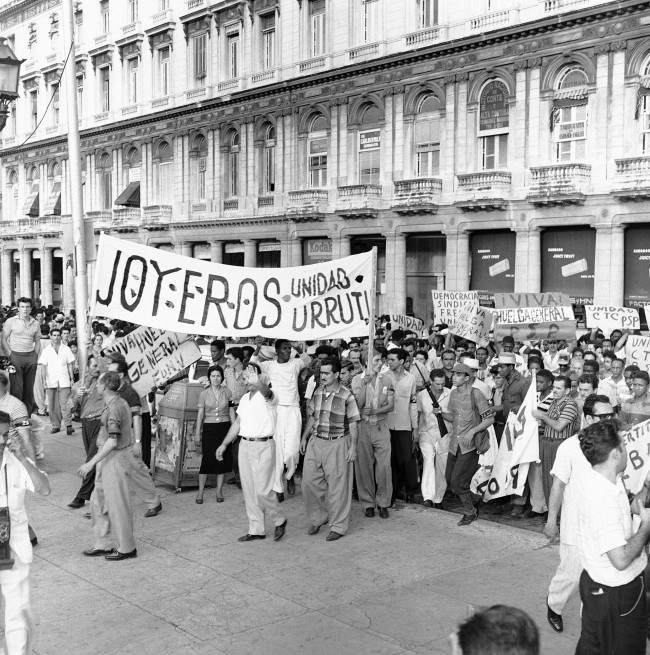
Jewelers brought out this big banner at this mass meeting to pledge support Manuel Urrutia, named by Rebel Leader Fidel Castro to be the next President of Cuba. A huge crowd gathered in Central Park expecting to see the new president but was disappointed in Havana, Jan. 2, 1959.
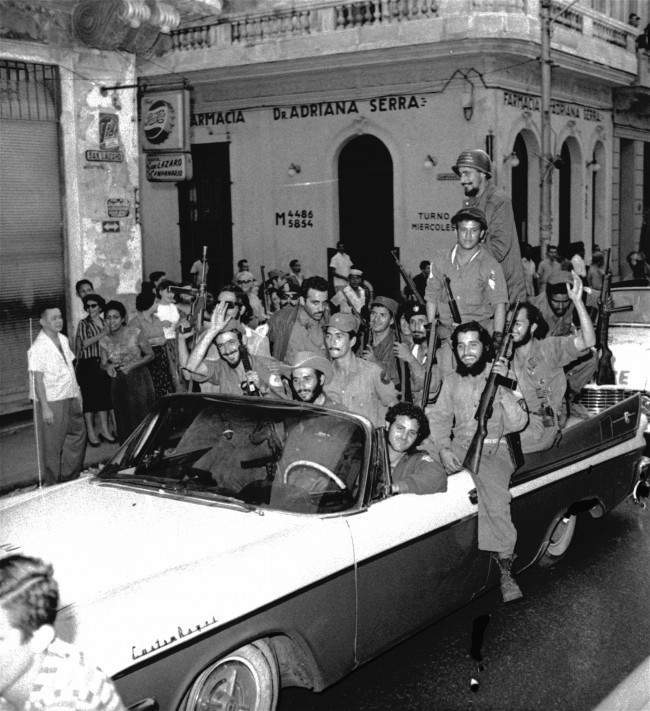
Troops of rebel leader Fidel Castro who have been fighting in the mountains and wilds for the past many months wear broad smiles as they parade through downtown Havana late January 3, 1959, in a show of strength. Thousands jammed the walks to see the parade.
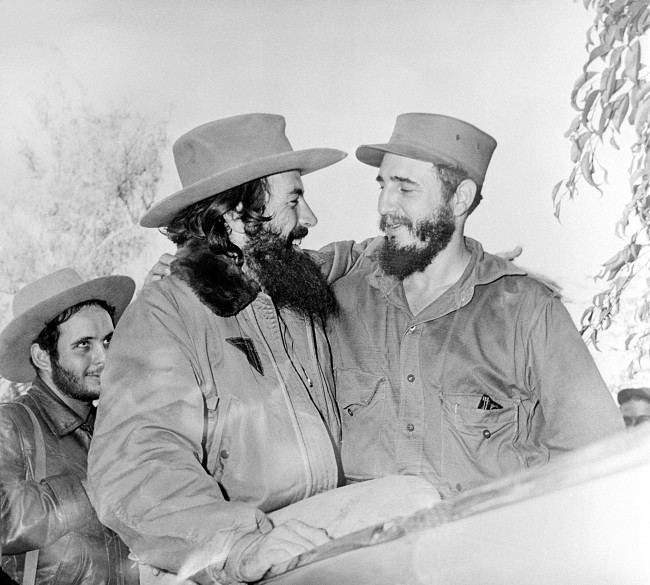
Cuban rebel leader Fidel Castro, right, embraces Camilo Cienfuegos, Revolutionary Army commander, in Santiago, Cuba, Jan. 4, 1959. Cienfuegos is leaving for Havana to take command of the Columbia barracks.
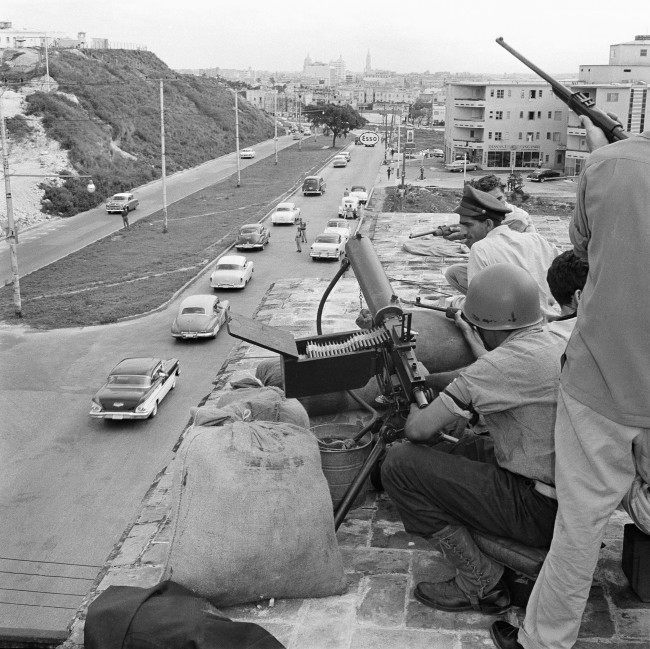
Supporters of the Revolutionary government of Cuba man a machine gun post overlooking one of the main streets, Zapata Avenue, into the heart of the city (background) in Havana, Jan. 4, 1959. Tension eased in the city somewhat but Fidel Castro’s supporters kept a close armed watch on the city.
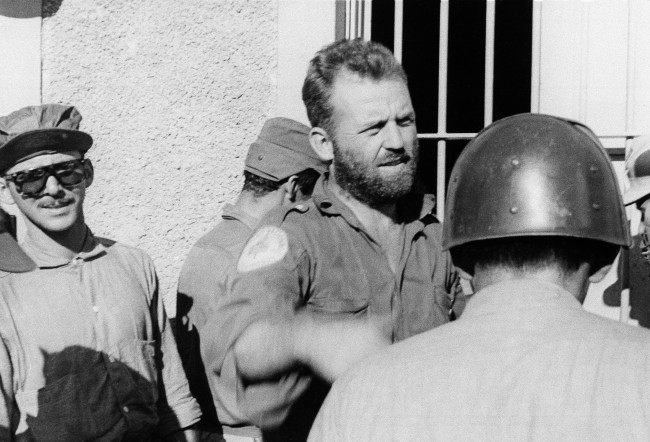
January 5, 1959, William Alexander Morgan, a native of Ohio, is shown in battle dress with Fidel Castro’s forces in Las Villas province. Morgan, 30, is a major and is second in command of Second National front and commander of Cienfuegos garrison.

Fidel Castro talks with Ed Sullivan, TV variety show host and N.Y. Daily News columnist, January 6, 1959 in Matanzas, Cuba.
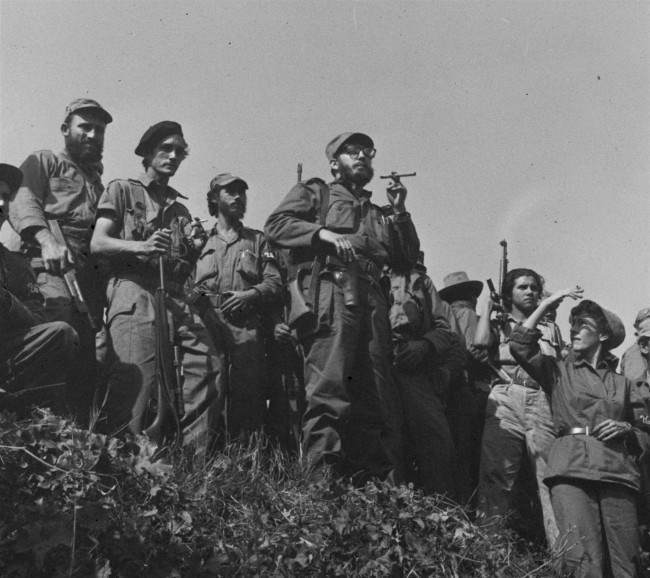
Soldiers of Rebel Chief Fidel Castro take positions on road bank as the revolutionary leader makes a roadside appearance a few miles from there January 7, 1959, as his columns travel toward Havana where a big welcome is expected tomorrow.
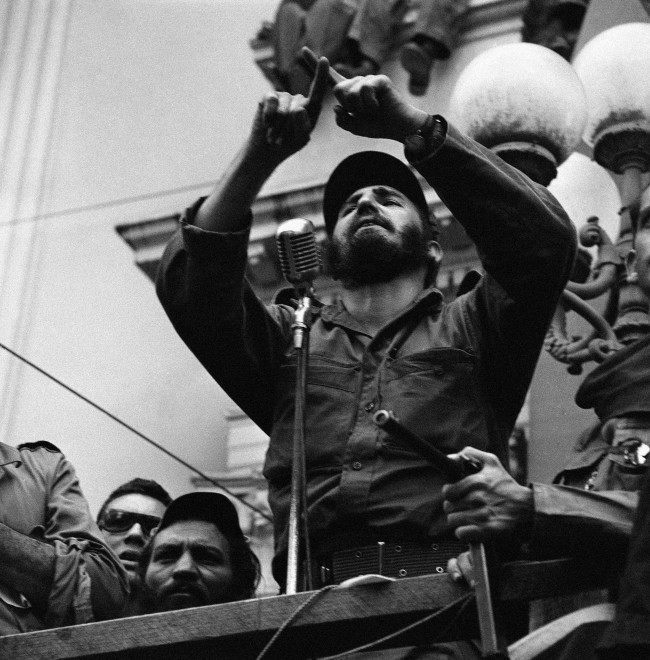
Rebel Leader Fidel Castro makes a cross with his fingers and swears that he will be true to the faith the people have placed in him as he addresses huge crowd in Santa Clara, Cuba Jan. 7, 1959. Castro and his forces are enroute to the capital city of Havana.
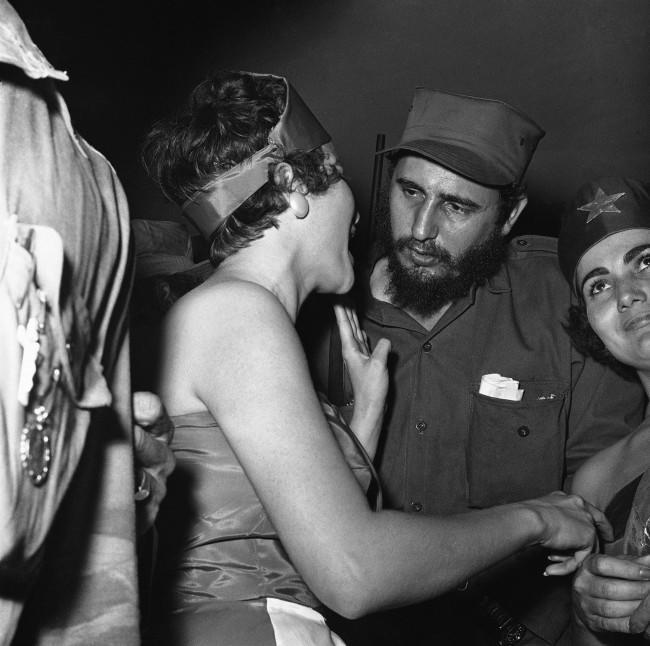
Pretty girls usually show up to greet victorious heroes and Fidel Castro head of Cuba?s Revolutionary forces was accorded the full treatment when he arrived at Camp Columbia, military headquarters in Havana on Jan. 8, 1959. Here at the reception center a girl dressed in the red and black colors of the 26th July Movement rushes up to greet Cuba?s newest hero.
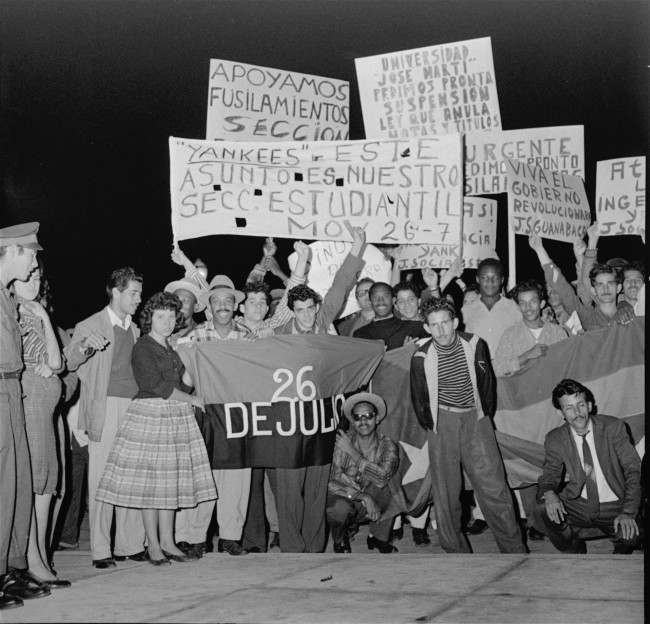
Students among crowd demonstrating in front of the presidential palace January 16, 1959, carry signs backing the rebel provisional government. Some of signs support executions which followed former dictator Fulgencio Batista’s fall from power and victory of rebel leader Fidel Castro’s forces; others say that what is happening in Cuba is Cuba’s business.

Armed teenage rebel soldier stands guard on hill overlooking training field for rebel troops of Fidel Castro, Jan. 19, 1956. Large portion of about 1,000 new recruits are in formation below. A few of these men have seen combat in fight to overthrow the Batista government. Training camp is near Santiago in Oriente province, birthplace of the revolution in Cuba.
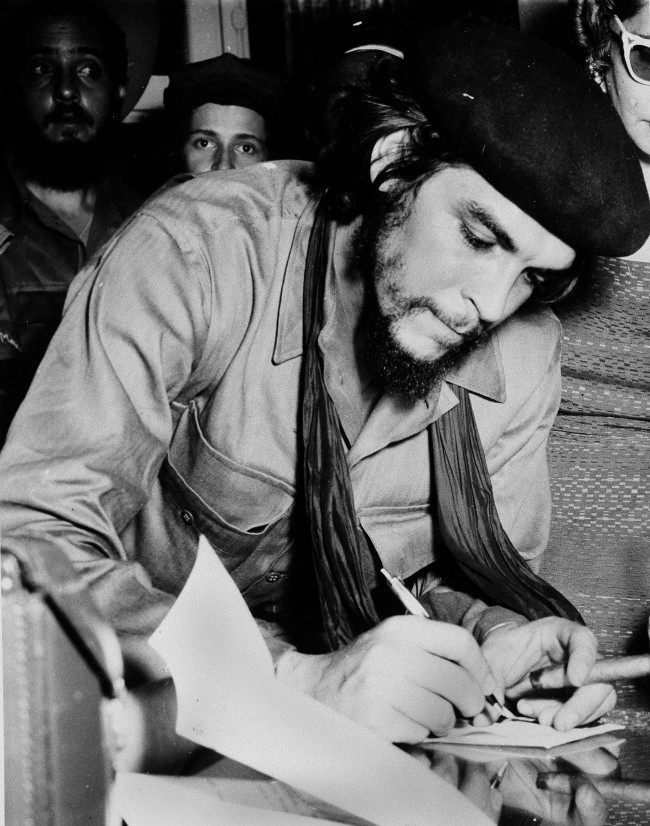
Ernesto “Che” Guevara, Cuban revolutionary Fidel Castro’s right hand man, who is an Argentine doctor in charge of La Cabana fortress in Havana, which houses 600 war and political prisoners, is seen Jan. 20, 1959. He promises to be one of the more important persons in the upcoming trials.
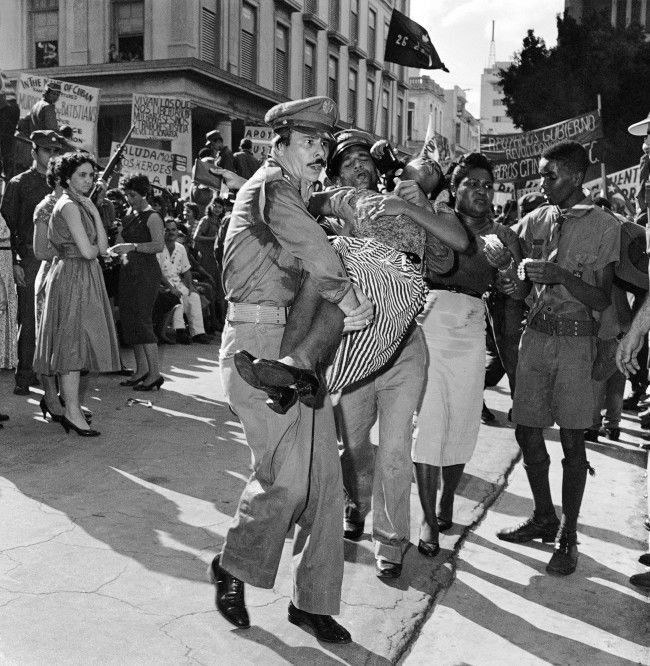
Rescue workers carry a woman to a first aid station after she fainted in the jam packed mob awaiting appearance of Fidel Castro in front of the Presidential Palace in Havana, Jan. 21, 1959. More than a score fainted in the area near the speakers stand as a hot sun beat down.
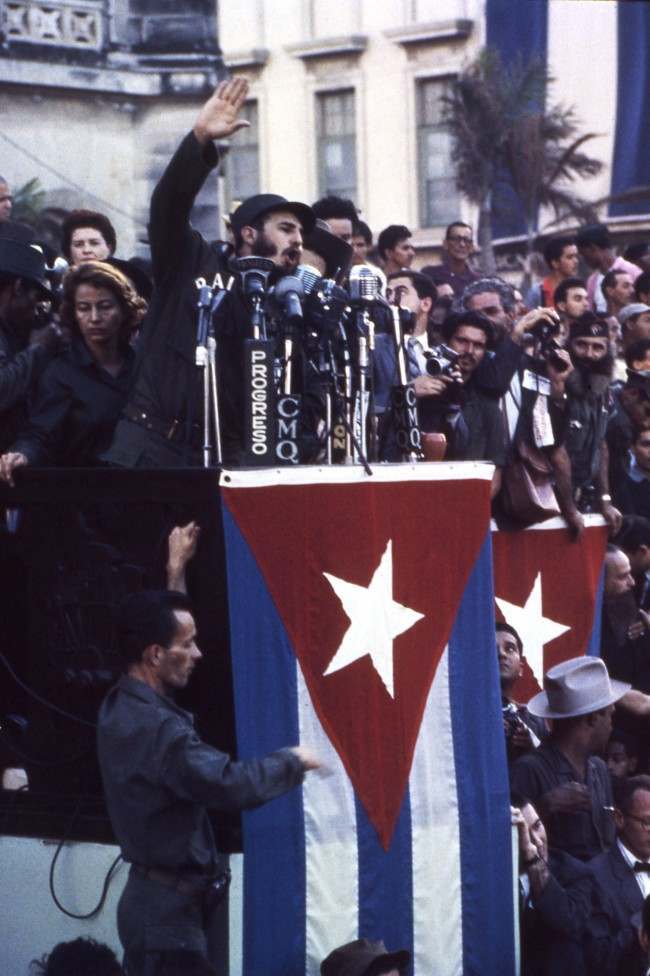
Rebel leader Fidel Castro gestures as he makes a point as he speaks into a battery of microphones in Havana, Cuba on Jan. 21, 1959 during rally in front of the Presidential Palace, called to back the government’s policy executing “war criminals.”
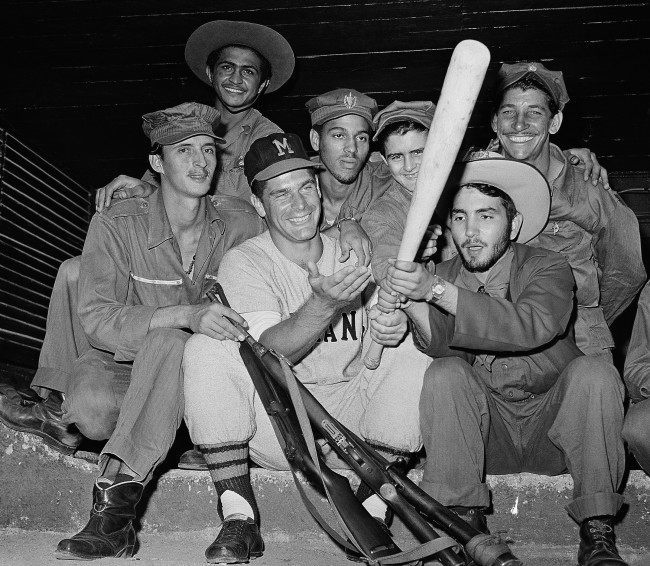
A rebel solider from the Fidel Castro army gets a kick out of trying the bat of Charley Lau, Detroit catcher, playing ball in the Cuban winter league, February 1, 1959. Lau made the boys let him keep their guns so he would be sure and get his favorite stick back.
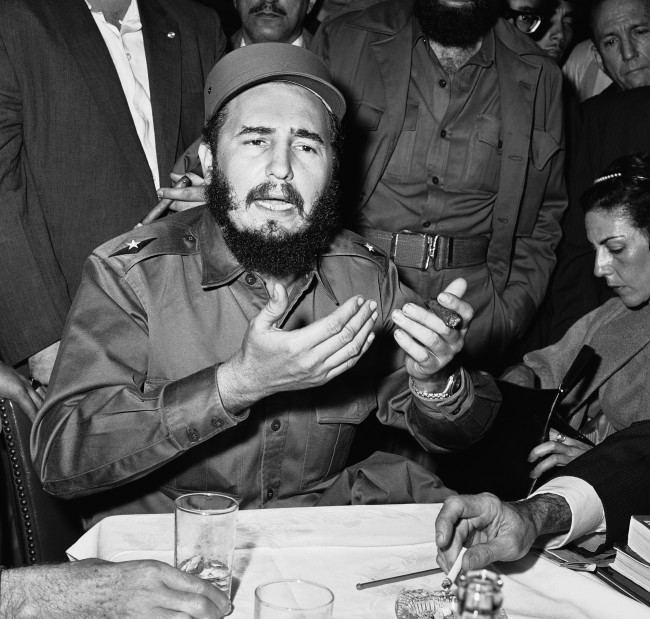
Fidel Castro, hero of the Cuban revolt, runs a gamut of emotion as he speaks to a crowd during his triumphal march to Havana following the fall of the Batista government on Jan. 30, 1959. Huge crowds greeted the rebel leader all along the route. The reception was a contrast to his college days in Havana when he was regarded largely as a country bumpkin. But while Castro failed to attain the campus political goals he sought, he was a determined orator even then and wasn’t without a following.

Rebel Leader Fidel Castro stops to talk with a farmer on horseback as he tours the foothills of the Sierra Maestra on Feb. 4, 1959 in Manzanillo, Cuba during a tour of the Eastern part of Cuba that was the cradle of the Revolutionary government. This is one of a series of pictures made by Assocaite Press photographer Harry Harris who spent three days in Oriente province with Castro.
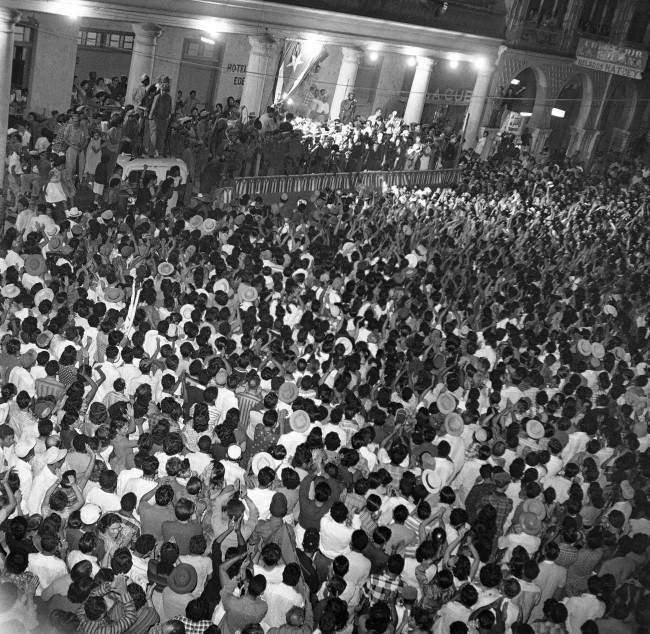
his was the scene in the town square as Fidel Castro, Cuba’s rebel leader was given a thunderous welcome when he made his appearance at a rally at 3 a.m. in Manzanillo, Cuba, Feb. 4, 1959. The rebel leader was scheduled to appear about 8 p.m. but extra stops en route delayed his arrival. The crowd stayed on and packed the square for the early morning visit.
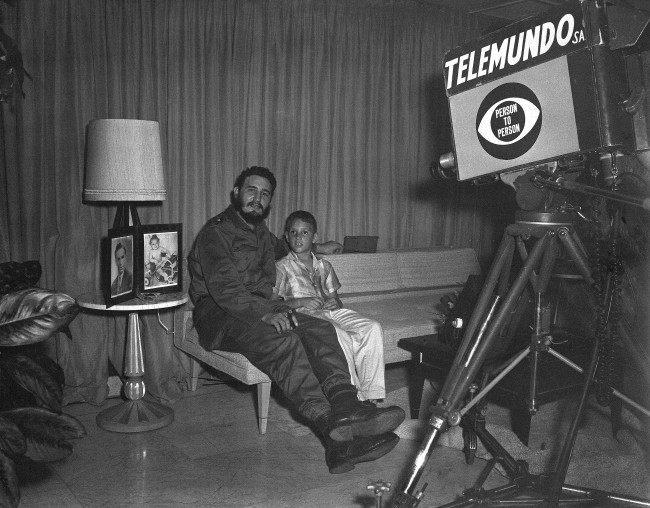
Cuba’s revolutionary leader Fidel Castro sits with his nine-year-old son, Fidel Jr., as he appears on the U.S. television program
Date: 06/02/1959
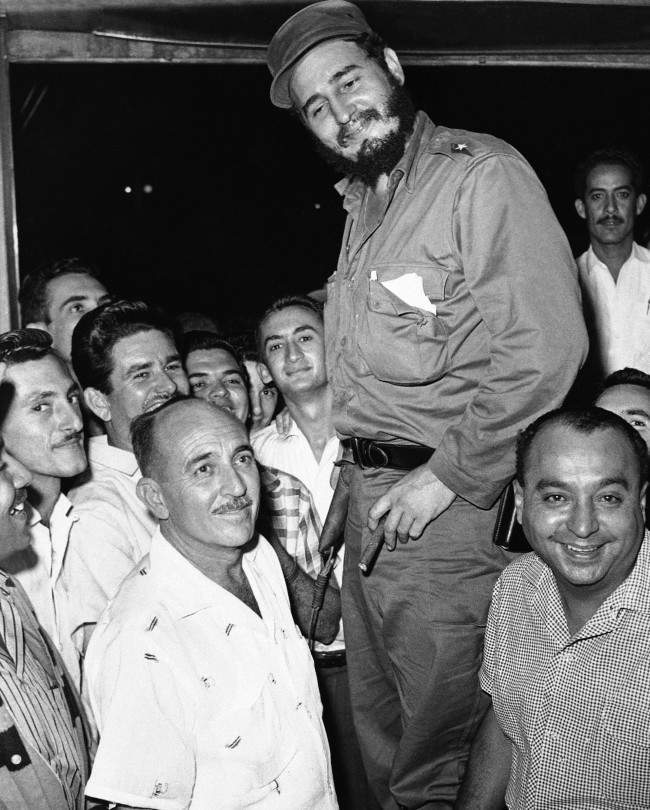
Fidel Castro in a village in Eastern Cuba. Castro had refused to strike pose atop coffee shop table in Havana, Cuba on Feb. 14, 1959.
Would you like to support Flashbak?
Please consider making a donation to our site. We don't want to rely on ads to bring you the best of visual culture. You can also support us by signing up to our Mailing List. And you can also follow us on Facebook, Instagram and Twitter. For great art and culture delivered to your door, visit our shop.

